The circuit below is an oscillator. When I simulate it with ltspice, it does indeed generate a waveform (although it doesn't seem to be a very pure sine wave).
What I fail to understand is why it oscillates.
All the basic literature I have read so far on oscillators (Colpitts, Clapp, Hartley, etc ...) seem to indicate that oscillator circuits need to have both capacitors and inductors in the "tank" part of the circuit.
Also, if you look at the theory, it seems like you need to have both caps and coils to make a tank that has a proper resonant frequency (the 1/Sqrt[LC] formula), but this circuit's "tank" is only made from resistors and capacitors.
When I compute impedances for the tank of that circuit using H-topology formulas, it seem to be tuned to look like one big capacitor (except of course for the short to ground in the middle of it),
If anyone could explain why this circuit oscillates, and how, I would really appreciate it (both intuitive/practical and theoretical explanations are very welcome).

simulate this circuit – Schematic created using CircuitLab